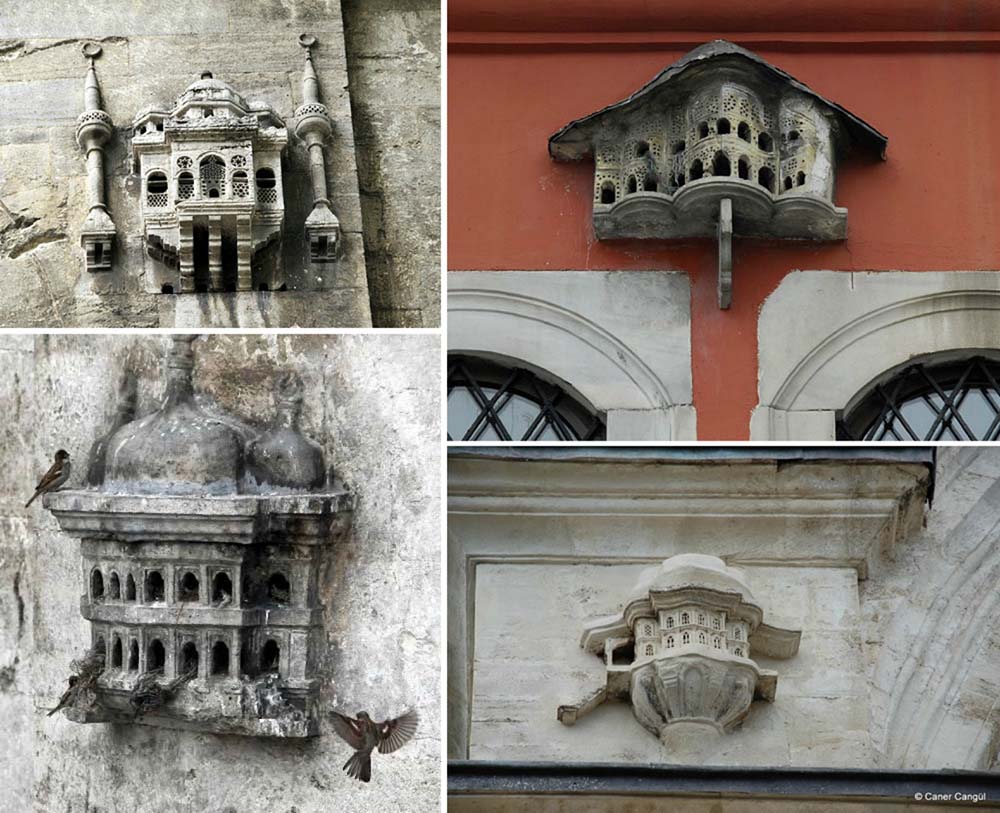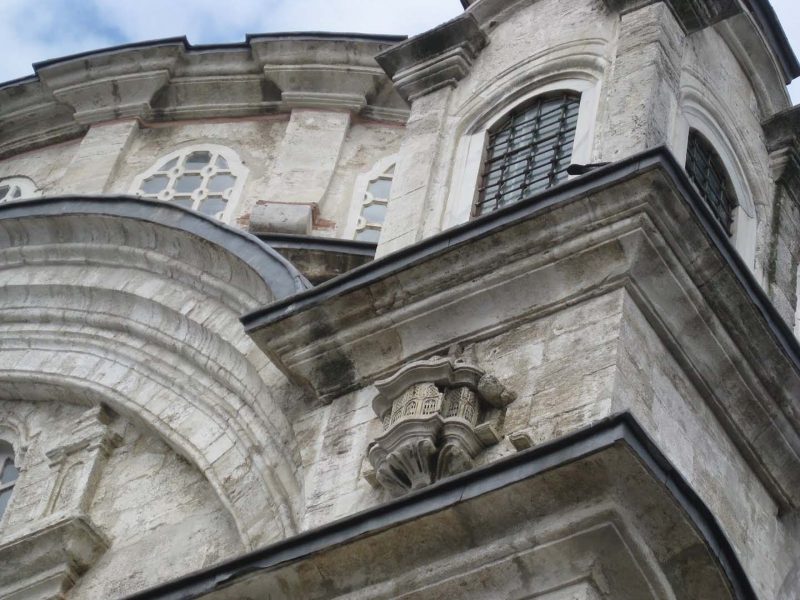The history of bird houses goes way back. The construction of bird palaces and houses, which has been developing since the 15th century in accordance with classical Ottoman architecture, reached different aesthetic dimensions through the 19th century. In fact, the purpose of making bird palaces is to provide shelter to freely flying birds, to protect them from burning sun and from rain and storms– and perhaps most importantly, from cats.
Bird houses are designed like models on the walls of some structures such as palaces, mosques, inns, tombs, and fountains. Bird houses are a symbol of how much people valued animals during the Ottoman period. Taking care of birds always takes an important place in Turkish society, culture, and ethnography. The phoenix is known as the head of birds created from fire which is half-eagle-half human and lives the mountain Kaf. According to Islam, the pigeon is accepted as a sinless creature. In pre-Islam Turkish society, the bird was always prioritized: shamans were created from bird symbols at that time, and feathers and bird figures were depicted wearing clothes. In the more recent era of Seljuks art, double-headed birds symbolized sovereignty.
These protected areas, called bird houses or palaces, were built on the outer walls of many buildings, such as mosques, bridges, fountains, and the library. Generally, they are located on warm and non-windy fronts. Because they are situated high up, humans and animals do not disturb them. The majority of the bird houses are made of wood, stone, or brick. There are good examples of typical bird houses in Amasya, Kayseri, Istanbul, Niğde, Tokat, İzmir, Kırklareli, Bolu, Edirne, and Tekirdağ. Many bird houses have not survived over time, mostly thanks to natural causes like earthquakes and fires. Bird houses that were made of stone have fared the best.

The purpose of making bird palaces is to provide shelter to freely flying birds, to protect them from burning sun and from rain and storms– and perhaps most importantly, from cats.
Bird houses were designed in two different types. It is said that the first style is the most-used design, and these are the models that are built on the façades of the buildings. It comes with cells or chambers and examples are available at the İstanbul Üsküdar Ayazma Mosque and Istanbul Eyüp Shah Sultan Fountain. This style of houses have a bay window and the buildings resemble a tiny mansion, extended up to resemble multi-storey palaces. Houses in the second style resemble instead a cubby that is carved in the form of niches between the walls of a building.
There are beautiful examples of birdhouses constructions that have lasted to the present day, intact. Visit İstanbul Taksim Maksemi, Nevşehir Kurşunlu Mosque Library, Laleli Sultan Mustafa III Tomb, Üsküdar Ayazma Mosque, Laleli Sultan Selim Türbesi, Kayseri Sheikh Ibrahim Tennuri Fountain, Selimiye Mosque, and Eyup Shah Sultan Fountain bird-houses are lasting examples of love and compassion. In fact, the Bursa Stork Hospital (Gurabahane-i Laklakan), a pet hospital, is also a good example of a bird-house.

There are beautiful examples of birdhouses constructions that have lasted to the present day, intact.
Bird houses in Üsküdar/Istanbul are important architectural works. Gülnuş Emetullah Valide Sultan Mosque, known as the new Valide Mosque, is one of these beautiful buildings. This bird house has a design full of intricate reliefs on both sides inspired by stone processing and carving arts. The dome on it is so unique. The bird house on the wall of Selimiye Mosque in Üsküdar opposite Selimiye Barracks consists of large cells and cages. The windows are decorated with ornaments. Some also are used as shelters for birds. It carries traits of Ottoman and baroque architecture. Ayazma Mosque in Üsküdar also has one of the most beautiful bird house examples.
Bird houses located at the entrance of İstanbul Taksim Maksemi were built during the Sultan Mahmut period. They were designed to be symmetrical to one another. The bird house in Şeyh İbrahim Tennuri Fountain in Kayseri is also three storeys. Eyup Mosque, also known as the first mosque built after the conquest of Istanbul, also has birdhouses. After the mosque’s restoration, the bird houses were meticulously preserved and cleaned. Visitors can also see pigeon paintings and bird reliefs on the walls of the mosque.

